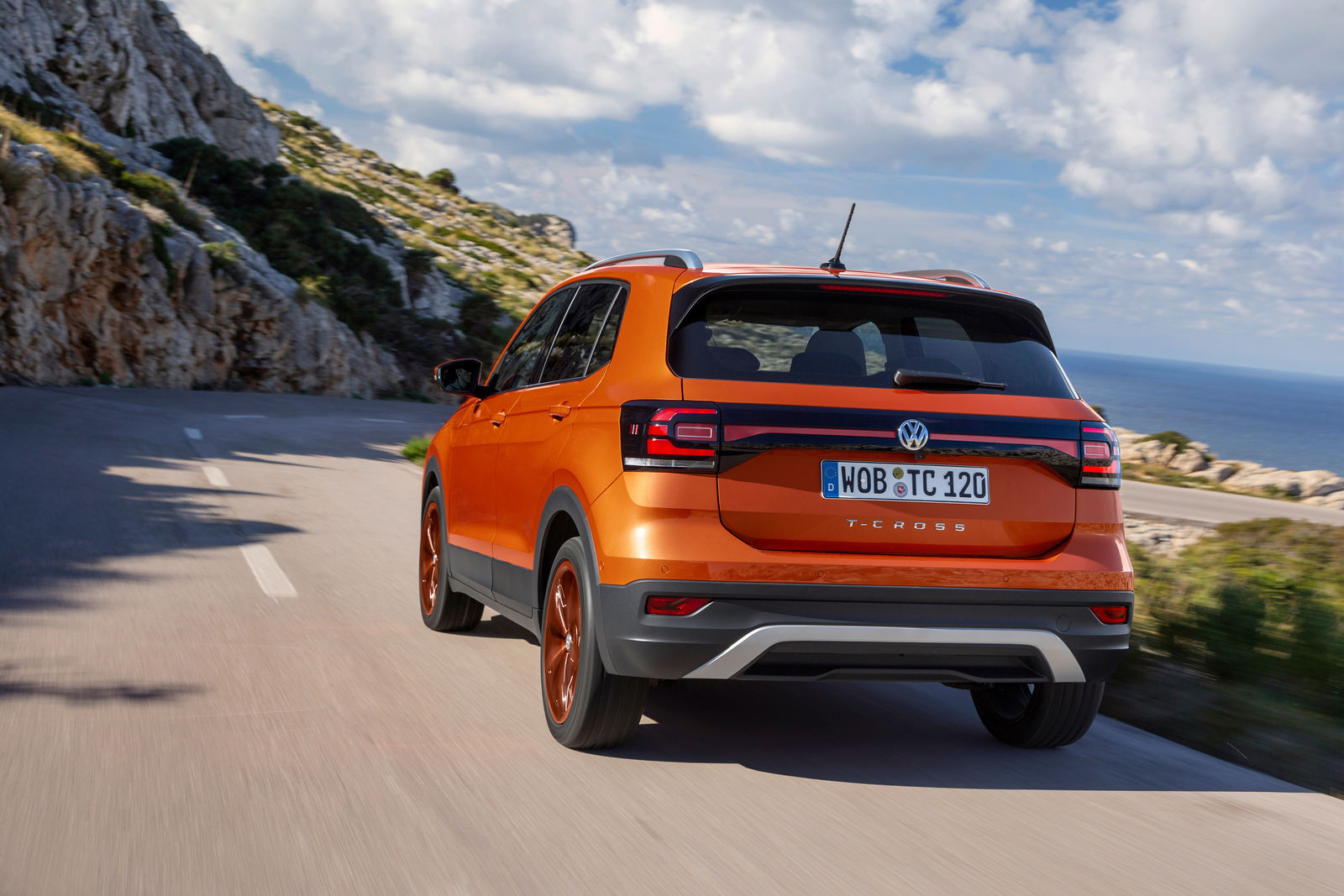The T-Cross is the practical, cool and versatile addition to Volkswagen’s attractive SUV range. It is an urban crossover model which gives low-cost entry to this vehicle class in addition to comprehensive standard equipment and plenty of flexibility. The T-Cross is even more suitable for the city than the T-Roc, more compact than the Tiguan, but just as sophisticated. The T-Cross is as versatile and usable as its bigger siblings. With its attractive design, the crossover is a flexiblemodel with numerous customisation options and the utmost recognition value – in other words, it is a typical Volkswagen.
The T-Cross is manufactured using the modular transverse matrix (MQB), as is the Polo. Just like its sister model, the new T-Cross is also manufactured at the Spanish Volkswagen factory in Navarra. Volkswagen is set to invest some €1 billion there by the end of 2019 in order to aid the particularly strong growth of the compact SUV market. Studies forecast that this segment is likely to double in size over the next decade. In addition, bespoke versions of the T-Cross will be manufactured in South America and China for their respective markets.
As with all Volkswagens, the new T-Cross sets standards in its class, and all at an affordable price. The basic version, priced at €17,975 (T-Cross 1.0 with 70 kW / 95 hp) is already an attractive, independent model, which leaves virtually nothing to be desired thanks to its versatility, high level of safety and smart connectivity.
Two engines to choose from initially
Two engines will initially be available for the front-wheel drive T-Cross at the launch. Both are based on a 1.0 TSI engine with three cylinders and a gasoline particulate filter, which will be offered at two output levels. This is derived from the EA211 aggregate, which has demonstrated impressive success in the Polo and other models from the Volkswagen Group. The T-Cross 1.0 TSI comes with the engine with displacement of 1.0 litres in 70 kW / 95 hp and 85 kW / 115 hp output variants.
While the basic model features a five-speed manual transmission that brings the engine just the right amount of power on the road, the 20 hp stronger variant is powered to perfection by either a 6-speed manual transmission or a 7-speed dual clutch transmission (DSG). The DSG comes with two driving modes as standard: “Normal” and “Sport”.
The T-Cross 1.0 TSI delivers 70 kW / 95 hp at 5,500 rpm, has a maximum torque of 175 Nm at 2,000 to 3,500 rpm, and is as agile as it is efficient. The three-cylinder engine accelerates from 0 to 100 km/h in 11.5 seconds, reaches a maximum speed of 180 km/k and consumes just 4.9 litres per 100 km (112 g/km CO2).
The more powerful variant, also designated T-Cross 1.0 TSI, has an output of 85 kW / 115 hp at 5,500 rpm with a maximum torque of between 2,000 and 3,500 rpm. This variant accelerates to 100 in 10.2 seconds, boasts a top speed of 193 km/h, and also consumes 4.9 litres (112 g/km CO2). These values are identical for manual and automatic transmissions. Both engines comply with the Euro 6d-TEMP emission standard.
Two additional engine options will be available in the near future.
Effective power transmission
Depending on the drivetrain and equipment range selected, a five- or six-speed manual gearbox or a seven-speed DSG directs power to the front axle. The entry-level petrol engine (70 kW / 95 hp) is combined with a five-speed manual gearbox, while the 85 kW / 115 hp variant is equipped with a six-speed manual gearbox as standard, or with the highly efficient seven-speed DSG as an optional extra. Both engines have a start/stop system and brake energy recuperation.
The engines at a glance
1.0 TSI, 70 kW / 95 hp, three-cylinder, 5-speed transmission
1.0 TSI, 85 kW / 115 hp, three-cylinder, 6-speed transmission / 7-speed DSG
